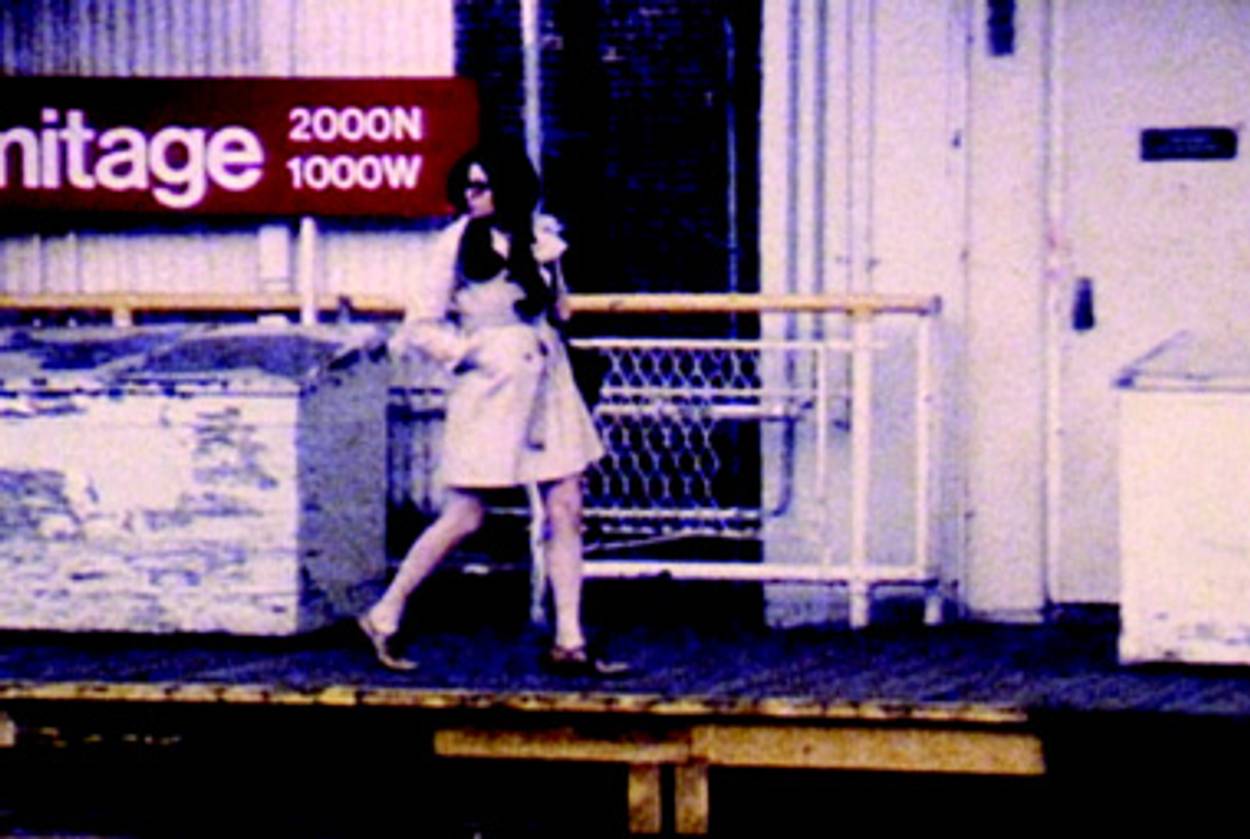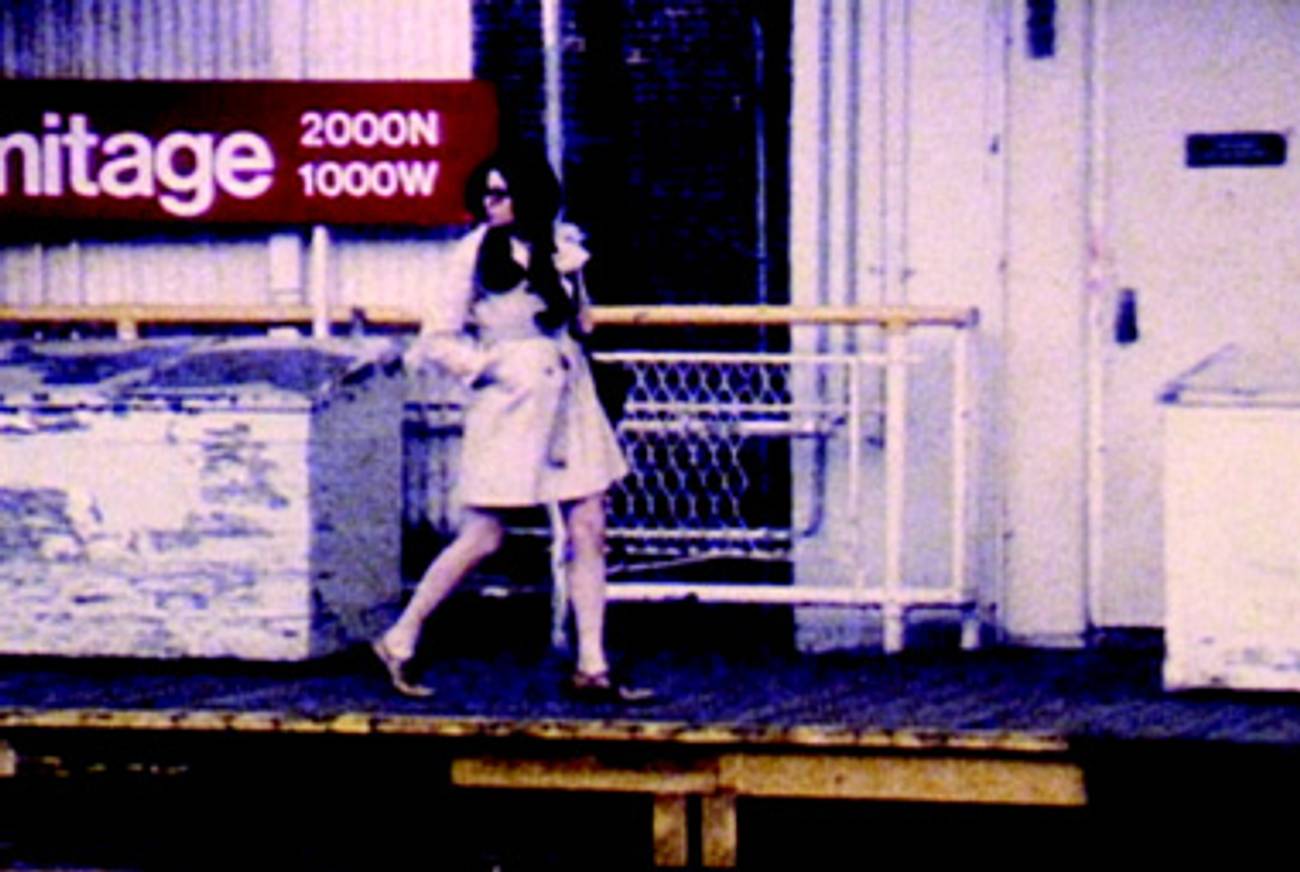Vision and Revision
A 1967 biopic offered a look at feminist icon Shulamith Firestone before she was famous. In a 1997 remake—now on view at the Jewish Museum—things are more complicated.




Sometimes it’s a puzzle to figure out why a particular exhibit or work of art is on display at an explicitly Jewish institution. If it’s not immediately apparent from the content of the piece, you can bet the artist herself is Jewish—often seen as ample justification, if not always an entirely comfortable one.
The award-winning and widely exhibited feminist artist Elisabeth Subrin is Jewish, as is Shulamith Firestone, the focus of Subrin’s 1997 film Shulie, on view at the Jewish Museum through the end of this month. (Full disclosure: Subrin is also the sister of Tablet Magazine’s Julie Subrin.) And though Firestone’s specific Jewish credentials are nothing to sniff at, it turns out that in this most Jewish of museum settings, Jewish identity is not the most Jewish thing about the film.
Subrin’s Shulie is a shot-by-shot, identically titled remake of a little-seen documentary made in 1967. That year, a group of four male film students shot a 37-minute, 16mm film about Firestone, one of a few they produced about the lives of the so-called “Now Generation.” At the time, Firestone was a 22-year-old art student in Chicago, not yet the influential feminist activist and thinker she would soon become. After moving to New York not long after the film was shot, she co-founded more than one radical organization and wrote the second-wave classic The Dialectic of Sex: The Case for Feminist Revolution, published when she was only 25.
Shot on grainy film stock, Subrin’s Shulie is defiantly true to the original. It feels like a period film, but our expectations of what that means are occasionally disrupted by a sly and subtly jarring marker of more contemporary times (a Starbucks cup, a Jansport logo, a flier warning against sexual harassment). A bewigged actress (Kim Soss) embodies Firestone with an uncanny sense of timelessness. We watch as this Shulie waits for a train, sorts mail in the Post Office where she works, paints a young man’s portrait, undergoes a grueling critique of her artwork—and confronts the camera directly, musing over an unseen interviewer’s questions about her daily life, her ambitions, and her impressions of the world.
The original Shulie was less interested in plumbing the depths of Firestone’s burgeoning politics—the word feminism is never mentioned—than in creating a portrait of her as someone symbolic of her generation. We can see the thoughts and tendencies that informed the ideas she would shortly champion: “I just generally identify with minority groups,” she says, claiming to relate to them more than “the homogenous masses.” She worries about what it would mean to live out what she calls a “meaningless life.” As she tells her interviewer, “I care about the now. … It’s just that it’s not enough for me to live in the now. I hate every day that I haven’t made some kind of landmark because it just goes by so fast. … I hate the shapelessness of it.” When the interviewer urges her to connect this to her generation, Firestone explains that the larger point is, “To live in the now. Don’t worry about today. Don’t worry about yesterday.”
Firestone’s words echo differently when spoken by the real person in 1967, and by the actress playing her 30 years later. As depicted in the original film, Firestone was of course unaware of the changes heading her way (as well as her own role in them), and she articulates her ideal of “living in the now” with an innocence that feels sweet and a little sad from our vantage point. However precisely Kim Soss mimics Firestone, her interpretation is naturally informed by her understanding of a history that Firestone couldn’t have known, because it was still ahead of her. Today, after this repetition has had another dozen or so years to marinate, Firestone’s sentiments have gained another few layers of complexity.
Subrin’s film asks us to reflect on why we preserve the things we do, why we’re inclined toward some slices of history and dismissive of others. The differences between the memories we personally have, what we’re obliged to remember, and the actual time we live in are easily confused, and it’s not always clear what actually counts as “the past.” For Jews, the past is a constant argument, frustratingly elusive even as we feel a sense of responsibility to know it well and remember it right. In a tradition that has made remembering something of an art, playing with memory has a more than a little gravity. That’s the trick of literally, physically putting a work like Shulie in a Jewish context: It helps tease out resonances that might otherwise stay latent, even as there’s the danger of encouraging viewers to make more of them than actually adds up.
Much of Subrin’s work has focused on repetition and recreation (her recent retrospective at the Sue Scott Gallery was titled, fittingly, “Her Compulsion to Repeat”). Shulie was an irresistible subject for her—a sort of time capsule that depicted a notable figure before she became notable, in a moment on a historical precipice. Subrin was just 2 years old when the original film was shot, and upon discovering it years later (she recalls in a 2006 essay on the work called “Trashing Shulie”), “I yearned to inhabit her reality, to feel this moment of pre-1968, before the haunting political and social revelations of her era, to say nothing of my own.” She’s far from the only artist to root her work in this kind of reproduction. But in the Jewish Museum, it’s an artistic strategy that resonates—conveniently, though not artificially—as intensely Jewish, as well as indelibly feminist.
“The year 1967 can only exist as myth to me,” Subrin writes in “Trashing Shulie.” Her version of Shulie shows how difficult it can be to distinguish that myth from the real thing, and how easy it is to confuse or conflate them. As both 1967 and 1997 recede further, the difference between those years—and the almost visually indistinguishable if conceptually distinct films made in them—will only get trickier to tease out. Both films will become synonymous with the blurry “past,” and their specific differences will start to matter less than the simple fact that they’re behind us.
The film itself is dedicated “To Shulamith Firestone, who has endured.” It’s true that her radical feminist philosophy has remained prescient even as it’s inevitably gotten somewhat dated. Firestone’s political activism more or less ended with the publication of The Dialectic of Sex, after which she withdrew into painting and later, mental illness (the latter is recounted in her 1998 memoir Airless Spaces; today she lives in New York and was mostly uncooperative with the 2003 reissue of her first book). She endures through her own work as well as through the ways others have built on it, likely not always in ways she agrees with. And so endurance seems less like a matter of heroism than a fact of life, of what happens as the years march on and we persist in trying to make sense of memories and experiences that are both our own and not. Over 37 minutes at the Jewish Museum, thatstarts to feel a lot like a Jewish virtue.
“Shulie: Films and Stills by Elisabeth Subrin” is on view at the Jewish Museum through January 30th.
Eryn Loeb, a contributing editor for Tablet Magazine, is a freelance writer and editor in New York.
Eryn Loeb, a contributing editor for Tablet Magazine, is a freelance writer and editor in New York.